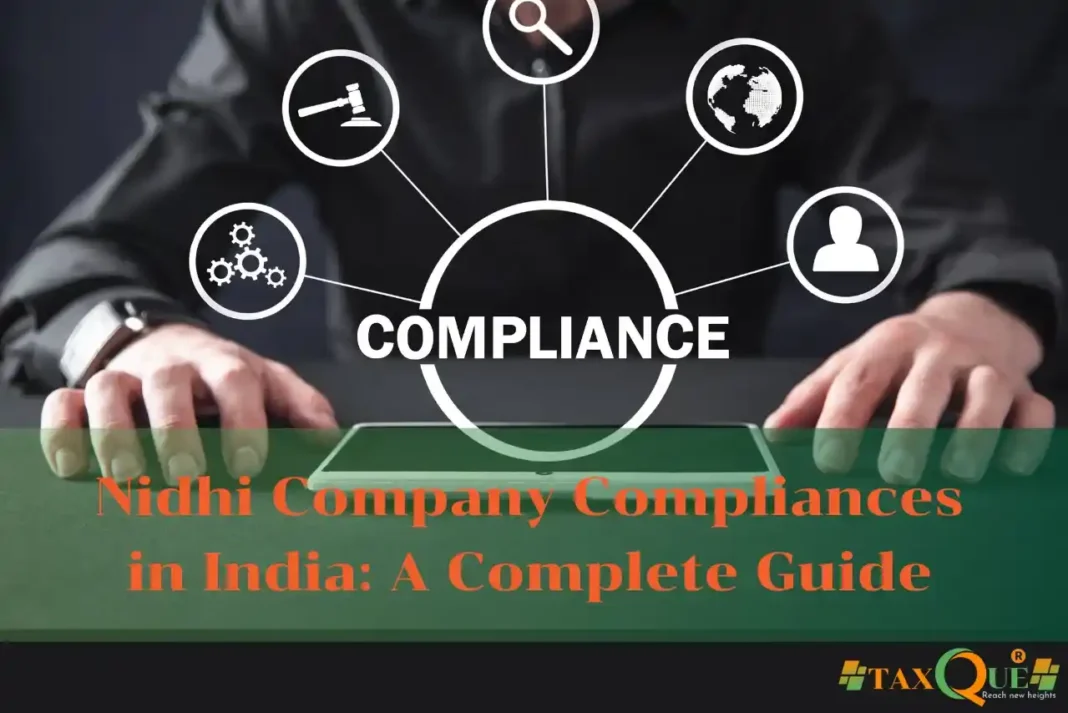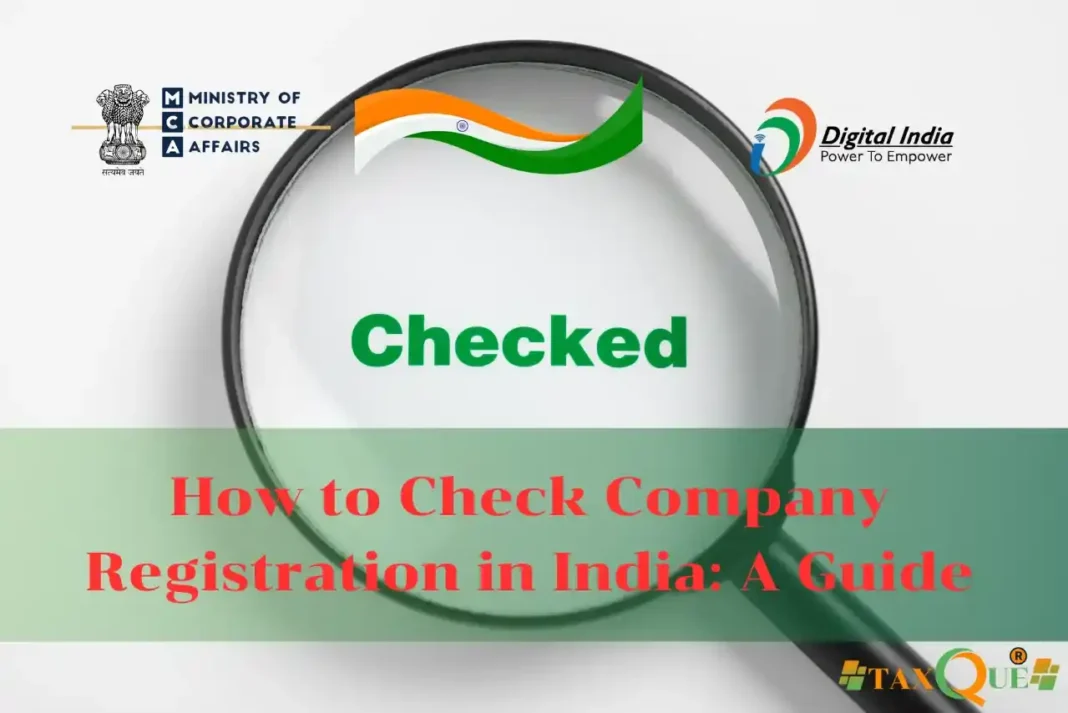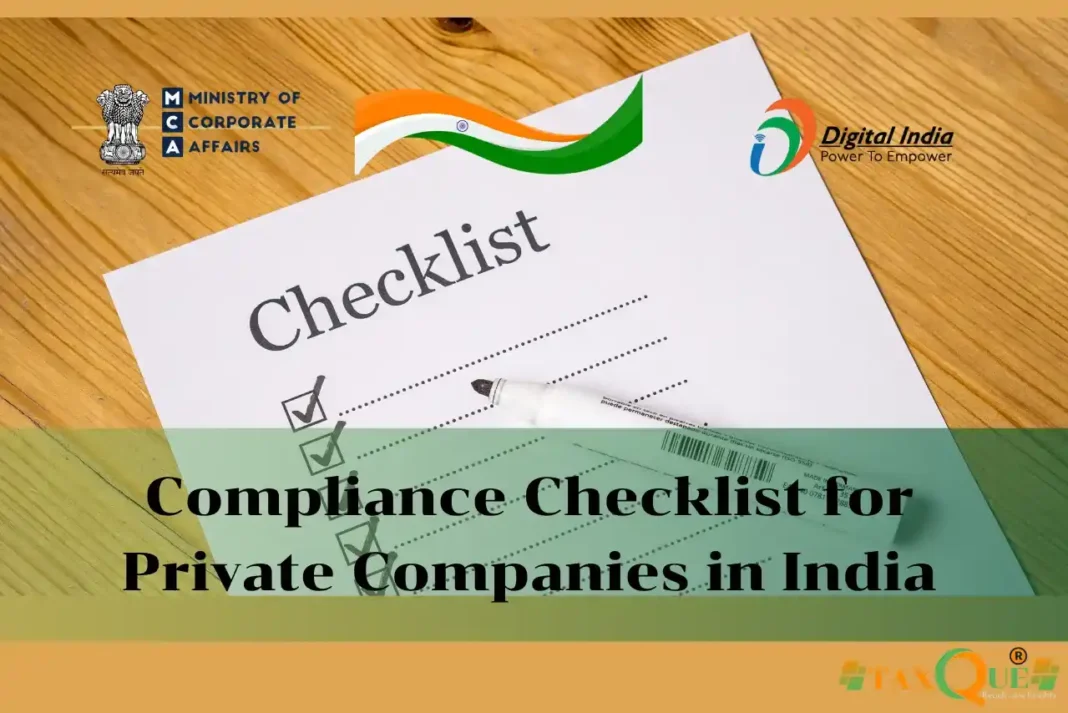Introduction
Nidhi company compliances are mandatory for Nidhi companies, which are non-banking financial companies (NBFCs) registered under Section 406 of the Companies Act, 2013, to promote thrift and savings among members. These compliances, governed by the Companies Act, 2013, and Nidhi Rules, 2014 (amended by Nidhi (Amendment) Rules, 2022), ensure transparency and protect member interests. This blog provides a detailed guide on nidhi company compliances, covering annual, one-time, and event-based requirements, deadlines, and how TaxQue simplifies the process.
What Are Nidhi Company Compliances?
Nidhi company compliances refer to the statutory, tax, and regulatory obligations that Nidhi companies, operating as public limited companies, must fulfill to maintain legal status and member trust. These include filings with the Registrar of Companies (ROC), income tax returns, and specific Nidhi-related forms like NDH-1 and NDH-3. Non-compliance can result in fines, penalties, or restrictions on accepting deposits.
1. Key Types of Nidhi Company Compliances
To maintain nidhi company compliances, businesses must address:
- One-Time Compliances: Initial requirements post-incorporation, like Form NDH-4.
- Annual Compliances: Regular filings like AOC-4, MGT-7, and NDH-1.
- Event-Based Compliances: Filings for changes in directors or registered office.
- Tax Compliances: ITR, GST, and TDS filings.
- Governance: Board meetings, AGMs, and statutory audits.
2. Detailed Compliance Checklist
Here’s a comprehensive checklist of nidhi company compliances for FY 2025-26:
| Compliance Task | Requirement | Frequency/Deadline |
|---|---|---|
| Form NDH-4 | Apply for Nidhi status declaration | Within 120 days of incorporation |
| Form NDH-1 | File member list and compliance status | Annual, within 90 days post-FY (June 29) |
| Form NDH-3 | File half-yearly return | Half-yearly, April 30/October 31 |
| Form AOC-4 (Financials) | File balance sheet and P&L statement | Annual, within 30 days of AGM (October 30) |
| Form MGT-7 (Annual Return) | File shareholder and director details | Annual, within 60 days of AGM (November 29) |
| ITR-7 (Income Tax Return) | File income tax return | Annual, October 31 |
| GSTR-9 (GST Annual Return) | File consolidated GST return | Annual, December 31 (if GST-registered) |
| Statutory Audit | Audit financials by a CA | Annual, before AGM (September 30) |
| AGM | Hold annual general meeting | Annual, September 30 |
| Board Meetings | Conduct minimum 4 meetings | Quarterly, max 120-day gap |
- One-Time Compliances: File Form NDH-4 within 120 days of incorporation to declare Nidhi status, ensuring 7 members (3 directors) and ₹10 lakh paid-up capital. Issue share certificates within 2 months.
- Annual Compliances: File NDH-1 (member list) by June 29, NDH-3 half-yearly, AOC-4, and MGT-7 post-AGM via the MCA portal. Submit ITR-7 by October 31 and GSTR-9 (if applicable) by December 31 on the Income Tax portal and GST portal. Conduct a statutory audit and hold 4 board meetings and an AGM.
- Event-Based Compliances: File Form DIR-12 (director changes) or INC-22 (office address change) within 30 days. File NDH-2 for extension if unable to meet 200 members or ₹20 lakh net-owned funds (NOF) within 1 year.
- Additional Requirements: Maintain NOF-to-deposit ratio of 1:20, 10% unencumbered deposits, and books of accounts. Ensure interest on loans doesn’t exceed 7.5% above the highest deposit rate.
3. Steps to Ensure Nidhi Company Compliances
Follow these steps to maintain nidhi company compliances:
Step 1: Complete One-Time Compliances
- Register as a public limited company with “Nidhi Limited” in the name.
- File Form NDH-4 within 120 days to obtain Nidhi status.
Step 2: Conduct Audits and Meetings
- Appoint a chartered accountant for annual statutory audits.
- Hold 4 board meetings and an AGM by September 30 to approve financials.
Step 3: File ROC and Tax Returns
- Submit NDH-1, NDH-3, AOC-4, and MGT-7 for ROC compliance.
- File ITR-7, TDS returns (24Q, 26Q), and GST returns (if applicable).
Step 4: Monitor Membership and Funds
- Ensure 200+ members and ₹20 lakh NOF within 1 year; file NDH-2 if unable.
- Maintain NOF-to-deposit ratio and 10% unencumbered deposits.
Step 5: Use Compliance Tools
- Track deadlines with a compliance calendar.
- Use TaxQue for automated filings and expert support.
4. Penalties for Non-Compliance
Failing to meet nidhi company compliances can lead to:
- Fines: ₹5,000 per officer/company for non-filing, plus ₹500/day for ongoing violations.
- Deposit Restrictions: Inability to accept deposits until compliance is met.
- Legal Action: Director disqualification or company dissolution.
TaxQue simplifies nidhi company compliances with expert guidance for ROC, tax, and Nidhi-specific filings. Visit TaxQue’s Nidhi compliance guide or ROC services for tailored solutions.
FAQs
1. What is Form NDH-4 in Nidhi company compliances?
Form NDH-4 is filed within 120 days of incorporation to declare Nidhi status with the MCA.
2. How many members are required for a Nidhi company?
A Nidhi company must have 200+ members within 1 year of incorporation.
3. What happens if NDH-1 is not filed on time?
Late filing incurs a ₹5,000 penalty, and the company may face deposit restrictions.
4. Is GST filing mandatory for Nidhi companies?
GST filing is required only if turnover exceeds ₹20 lakh (services) or ₹40 lakh (goods).
5. How does TaxQue help with nidhi company compliances?
TaxQue offers automated deadline tracking, form preparation, and expert support for NDH forms, ROC, and tax filings. Explore TaxQue’s compliance services.
Conclusion
Nidhi company compliances are vital for maintaining legal status and member trust in India. From NDH-1 and NDH-3 filings to ROC, ITR, and audits, timely adherence ensures smooth operations and avoids penalties. Platforms like TaxQue streamline nidhi company compliances with user-friendly tools and expert guidance. Stay compliant, track deadlines, and focus on fostering savings among members.





